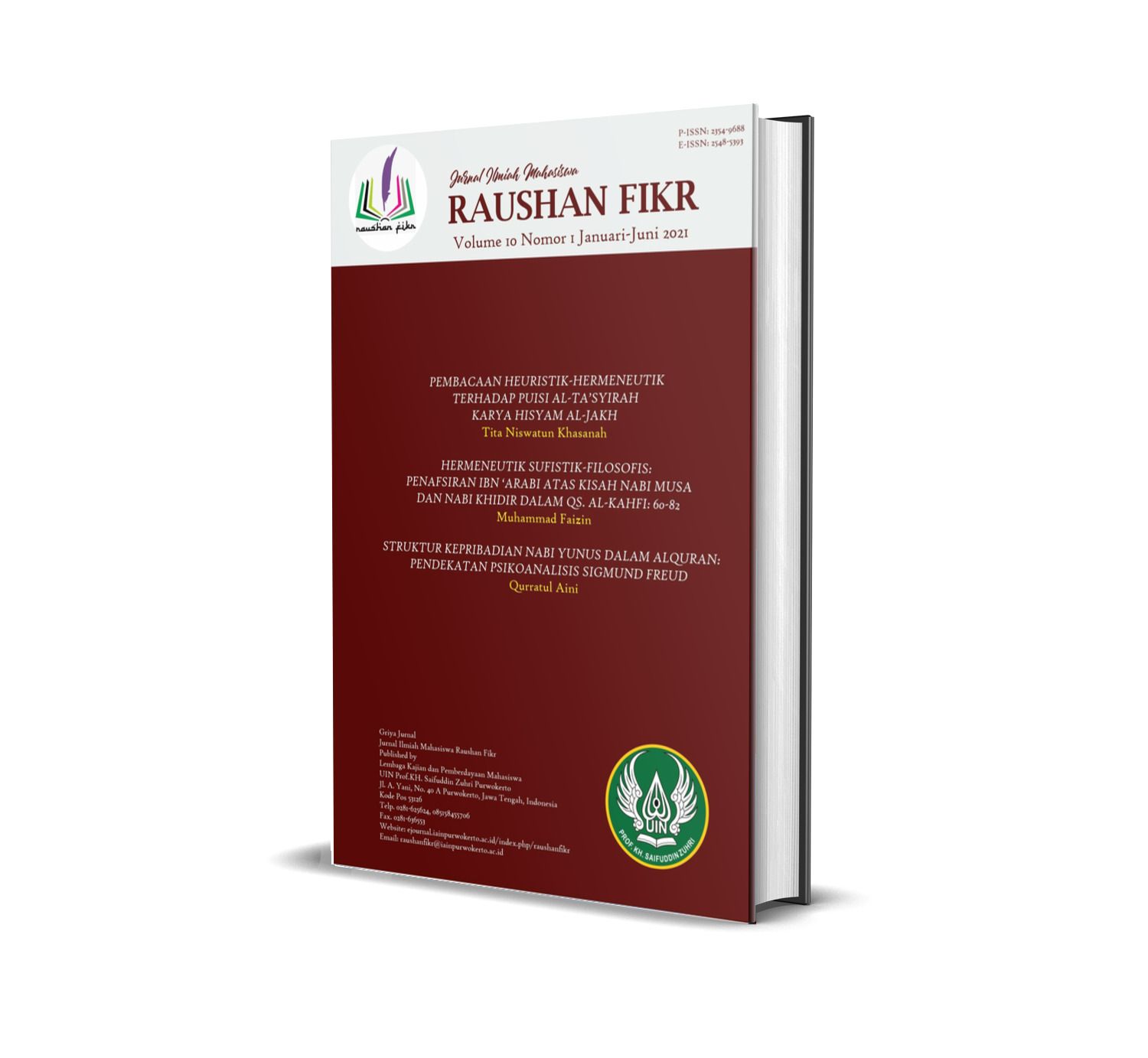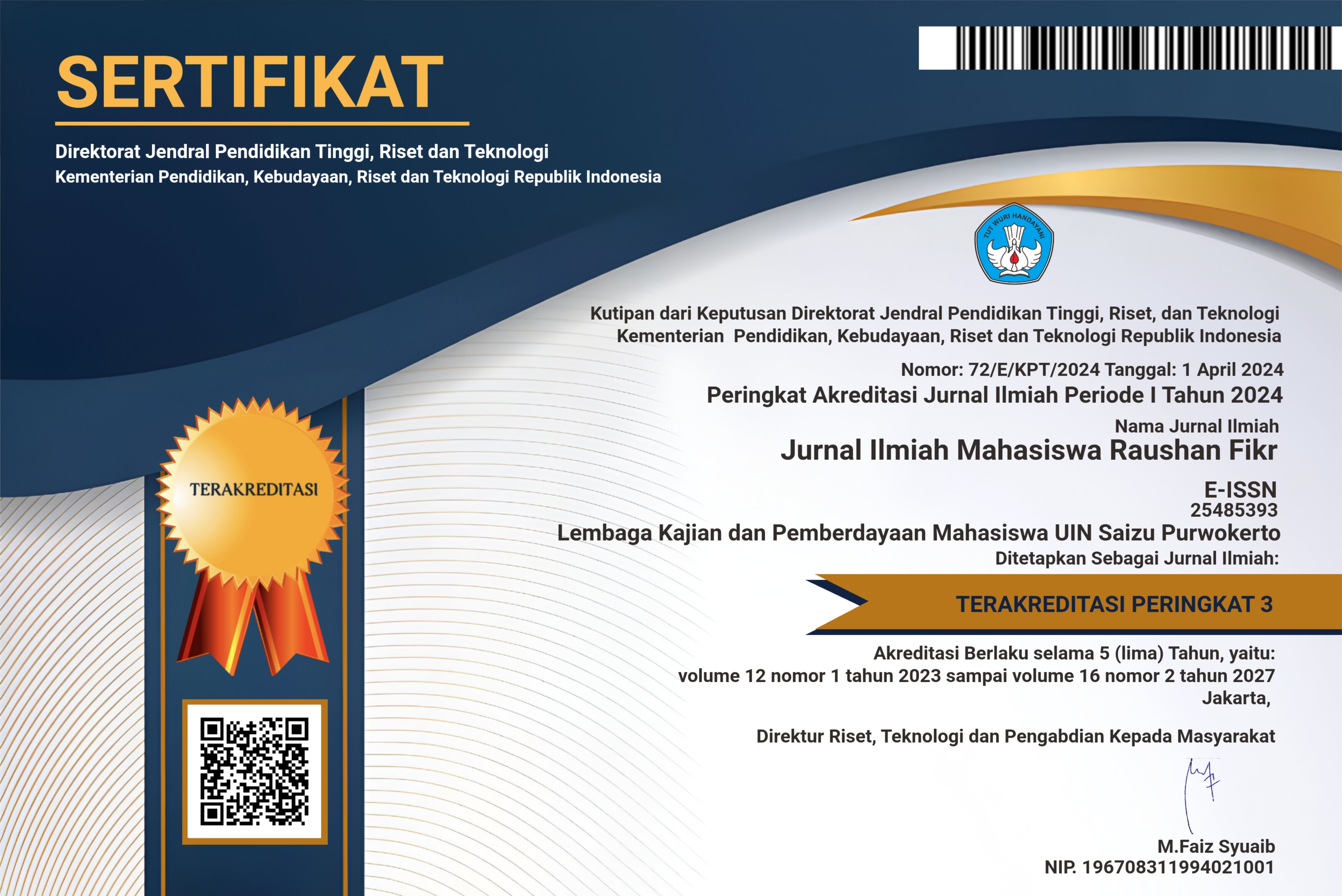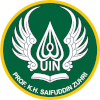Ayat-Ayat Perdamaian dalam Tafsir Al-Azhar Perspektif Teori Double Movement Fazlurrahman
DOI:
https://doi.org/10.24090/jimrf.v10i1.4638Keywords:
Peace, Double Movement Theory, Reinterpretation of Hamka's InterpretationAbstract
Religion is often used as an excuse for the emergence of conflicts, but is every conflict that occurs really on the pretext of religion? In the last few decades, conflicts on the pretext of religion have “broken†in several parts of Indonesia. In addition, religion is full of equal values ​​and norms with the term “peaceâ€. Hamka is a religious figure, humanist, and writer whose most of his writings are dedicated to improving the moral aspects of human beings. In this study, the author uses the theory of double movement to analyze Hamka's intention in explaining QS. Al-Hujurat [49]:9-10. In collecting of data, the author uses a library research approach. The results of this study are from the first step of reconstructing Hamka's interpretation by taking the moral ideals contained in QS. al-Hujurat :9-10 namely Justice, tolerance, mutual help, interrelationship deliberation, and the spirit of humanity. From these values ​​the author develops them into two forms, first, “inward movement†as a logical consequence of self-defense from immaturity in taking a stance that triggers division. Second, the “outward movement†is the impact of the depth of science and spirituality so that it can be a "medicine for the soul" in social life, especially in this era of technological progress.Downloads
References
al ‘Umari, A. D. (1994). Masyarakat Madinah Pada Masa Rasulullah SAW (Vol. 1). Media Dakwah.
Alfiyah, A. (2017). Metode Penafsiran Buya Hamka dalam Tafsir Al-Azhar. Jurnal Ilmiah Ilmu Ushuluddin, 15(1), 25–35. https://doi.org/10.18592/jiu.v15i1.1063
Almakin. (2016). Keragaman dan Perbedaan; Budaya dan Agama dalam Lintas Sejarah Manusia. SUKA-Press.
Bertrand, J. (2012). Nasionalisme dan Konflik Etnis di Indonesia. Ombak.
Frager, R. (2014). Heart, Self, & Soul: The Sufi Psychology of Growth, Balance, and Harmony. Mizan.
Gusmian, I. (2002). Khazanah Tafsir Indonesia. Teraju.
Hamka. (1990). Tafsir al-Azhar (Vol. 9). Pustaka Nasional PTE LTD.
Hamka. (2015a). Falsafah Hidup. Republika.
Hamka. (2015b). Tasawuf Modern. Republika.
Kiptiyah, K. (2007). Embriologi dalam Al-Qur’an: Kajian pada Proses Penciptaan Manusia. Ulul albab Jurnal Studi Islam, 8(2), 163–188. https://doi.org/10.18860/ua.v8i2.6201
Kuntowijoyo. (2018). Muslim Tanpa Masjid. IRCiSoD.
Maqsudi, I. (2011). Berislam Secara Toleran; Teologi Kerukunan Umat Beragama. Mizan.
Mas’adi, G. A. (1998). Pemikiran Rahman tentang Metodologi Pembaharuan Hukum Islam. Raja Persada.
Rahmayani, I. (n.d.). Kementerian Komunikasi dan Informatika. Retrieved July 30, 2021, from https://kominfo.go.id/index.php/content/detail/6095/Indonesia+Raksasa+Teknologi+Digital+Asia/0/sorotan_media
Saeed, A. (2016). Pengantar Studi al-Qur’an. Baitul Hikmah Press.
Sardi, M., & Ichwan, M. N. (n.d.). Agama dan Perdamaian: Dari Potensi Menuju Aksi (ed. Moch Nur Ichwan & Ahmad Muttaqin). Retrieved July 30, 2021, from https://www.academia.edu/12106353/Agama_dan_Perdamaian_Dari_Potensi_Menuju_Aksi_ed_Moch_Nur_Ichwan_and_Ahmad_Muttaqin_
Shihab, M. Q. (2015). Tafsir al-Mishbah. Lentera Hati.
Sirry, M. (2018). Islam Revisionis; Kontestasi Agama Zaman Radikal. SUKA-Press.
Sudirman, A. (2014). Sejarah Lengkap Indonesia; dari Era Klasik hingga Terkini. Diva Press.
Sutoyo, A. (2015). Manusia dalam Perspektif al-Qur’an. Pustaka Pelajar.
Teguh, I. (n.d.). Demo Protes Pembakaran Bendera di Bandung Diikuti Puluhan Ormas—Tirto.ID. Retrieved July 30, 2021, from https://amp.tirto.id/demo-protes-pembakaran-bendera-di-bandung-diikuti-puluhan-ormas-c8Fm
Tong, S. (2010). Agama dan Misi Perdamaian. Reformed Center For Religion & Society, 3(1).
Ulfah, N. M. (2017). Tasawuf Modern Studi Pemikiran Hamka (Haji Abdul Malik Karim Amrullah). Esoterik, 2(1). https://doi.org/10.21043/esoterik.v2i1.1896
Downloads
Published
How to Cite
Issue
Section
License
Authors who publish with this journal agree to the following terms:
- Authors retain copyright and grant the journal right of first publication with the work simultaneously licensed under a Creative Commons Attribution-NonCommercial-ShareAlike 4.0 International License that allows others to share the work with an acknowledgement of the work's authorship and initial publication in this journal.
- Authors are able to enter into separate, additional contractual arrangements for the non-exclusive distribution of the journal's published version of the work (e.g., post it to an institutional repository or publish it in a book), with an acknowledgement of its initial publication in this journal.
- Authors are permitted and encouraged to post their work online (e.g., in institutional repositories or on their website) prior to and during the submission process, as it can lead to productive exchanges, as well as earlier and greater citation of published work (See The Effect of Open Access).
















